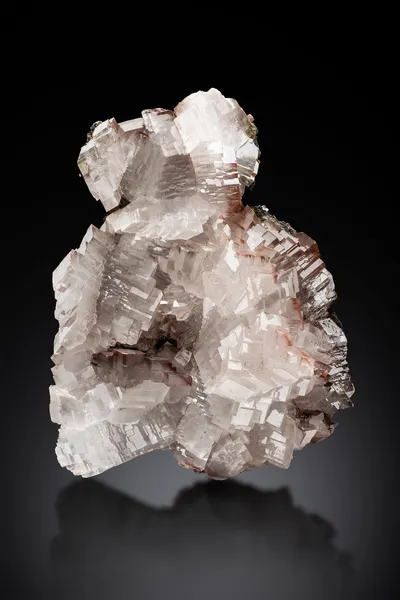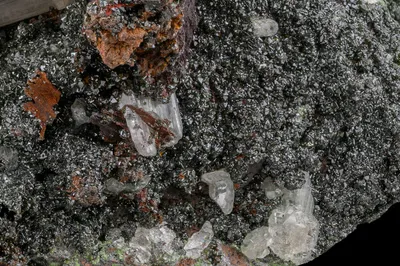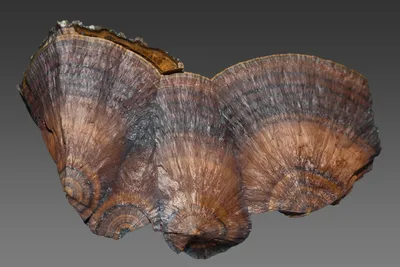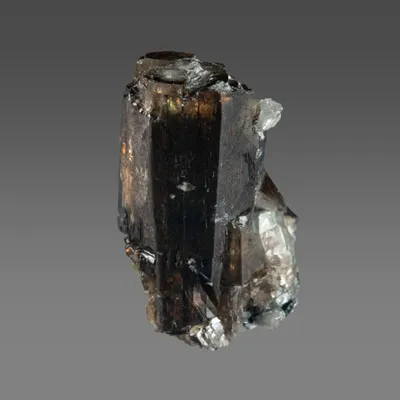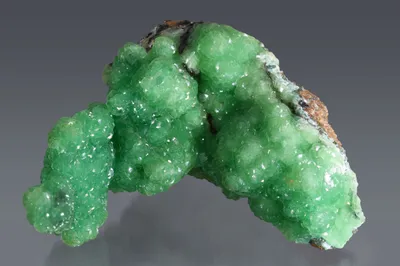Mineral Species
Hydrocerussite
Type Locality
No
Composition
Pb3(CO3)2(OH)2
Crystal System
Trigonal
Status at Tsumeb
Confirmed
Abundance
Very rare
Distribution
First (?), second and third oxidation zones
Paragenesis
Supergene
Entry Number
Species; TSNB172
General Notes
Hydrocerussite was first recorded in the literature as recently as the late 1970s (Keller 1977b). It has been documented from the second and third oxidation zones but its presence in the first oxidation zone is uncertain.
Keller (1977b) describes three distinct occurrences of hydrocerussite summarised (in English) by Keller and Bartelke (1982):
- As glossy scales or tabular crystals to 0.3 mm associated with azurite, the latter randomly altered to tenorite, malachite, mimetite and calcite. (Keller (1984) adds that the occurrence of hydrocerussite crystals independent of cerussite is very rare.)
- As inclusions in, or coatings on, cerussite with mimetite and phosgenite or with arsentsumebite, azurite and malachite.
- As pseudomorphs after euhedral crystals of cerussite (to 2 mm) associated with mimetite and duftite.
Unfortunately, the locations from which these specimens originated is not known but Keller (1977b) points out that hydrocerussite is stable in solutions of pH 10-13, indicating extremely basic conditions of formation. Williams (1990), however, emphasizes the importance of pCO2 in determining the relative stability of hydrocerussite and cerussite, with the latter becoming the stable phase as pCO2 rises for a given pH.
In each of the above occurrences (Keller and Bartelke 1982), hydrocerussite is the youngest mineral. Keller (1984) adds that the implied change to very basic solution conditions has resulted in alteration of some of the associated minerals, for example the alteration of azurite to tenorite. The altered or etched appearance of such material may have resulted in specimens being under-represented in collections.
Gebhard (1999) documented the 1991 discovery of the so-called "Lead Pocket" on 43 Level in the third oxidation zone. According to Gebhard the pocket was
"… filled with about 30 white twinned crystals [of cerussite] … these displayed cyclic twins to 5 cm diameter, well developed as floaters. No matrix specimens were observed. The surface was white, porcelain-like. A closer examination showed hydrocerussite replacing cerussite. This alteration varies from a thin superficial crust to a complete replacement of the cerussite."
Only lead minerals were found in this pocket, with associates being three lead oxides – litharge (blood-red), massicot (yellow) and minium (orange-red) – and scotlandite, the only sulphite known from Tsumeb.
Cairncross (2018) provided an overview of the occurrence of hydrocerussite at Tsumeb.
Associated Minerals
anglesite; arsentsumebite; azurite; calcite; cerussite; dolomite; duftite; dundasite; elyite; goethite; litharge (?); malachite; massicot; mattheddleite (?); mimetite; minium; parkinsonite; phosgenite; scotlandite (?); sepiolite; sidpietersite; smithsonite; tenorite
Pseudomorphs
Hydrocerussite is reported to form pseudomorphs after the following minerals: anglesite (rare, and usually as a surface replacement); cerussite (common, though rarely as a complete replacement).


